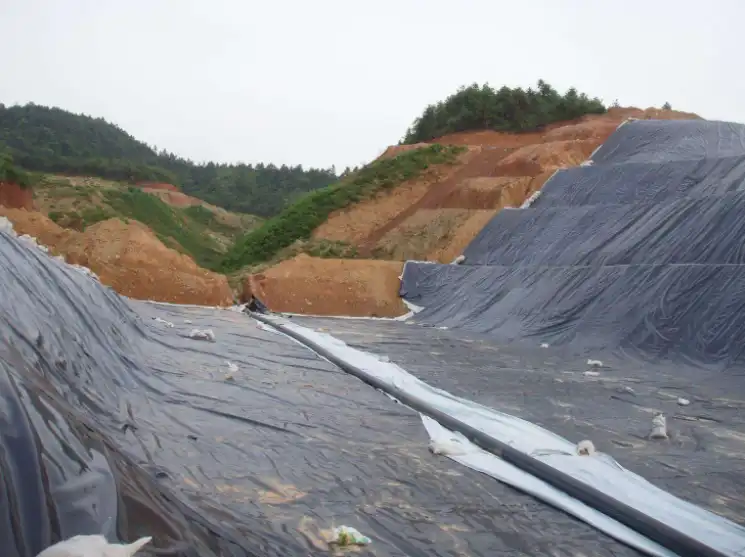
Temporary anti-seepage treatment plan for tailings pond (geotextile membrane), anti-seepage membrane. When selecting geotextile membrane for tailings dam engineering, the following factors should be considered: low permeability, high tear and puncture resistance, chemical corrosion resistance, it can adapt to temperature changes, high durability, anti-seepage membrane construction, landscape river anti-seepage, sewage pool anti-seepage, landfill anti-seepage, metallurgical and mining anti-seepage, aquaculture anti-seepage, building waterproofing, canal anti-seepage, leachate anti-seepage, chemical sewage anti-seepage, and wastewater pool anti-seepage, Geomembrane manufacturer - Hengrui Pay Attention - With the continuous mining, more and more tailings are being accumulated.
Every year, a large amount of funds are needed to build and maintain tailings ponds, but there is still a risk of dam collapse and pollution in tailings ponds. The anti-seepage geotextile film for tailings ponds, as well as the greening on slopes and high slopes, is urgently needed for tailings treatment. With the increasing requirements of the country for mining environmental protection and safety, the problem of anti-seepage in tailings ponds cannot be delayed, which has caused many mine owners distress. The anti-seepage film for slag yards does not leak, solving the worries of mine owners in the future.
Due to the fact that tailings ponds are a high-risk source of artificial debris flow with high potential energy, there is a risk of dam failure. Once a failure occurs, it can easily lead to major accidents. The tailings pond covers a large area and contains a large amount of toxic and harmful substances, with a large amount of tailings. It is necessary to be very meticulous in terms of anti-seepage and leakage prevention in order to cut off pollution. Once a leak occurs, the consequences are unimaginable.
In order to avoid leakage of waste liquid, tailings ponds often use geotextile membrane as a bottom layer for anti-seepage. However, copper mine tailings ponds should do a good job in anti-seepage due to the large amount of heavy metals contained in waste liquid and tailings sand. The upper inclined wall part should be covered with geotextile membrane for anti-seepage, and the lower part should be connected to the vertical anti-seepage wall, up to an elevation of 358.0m (0.97m higher than the check flood level)
Due to its excellent anti-seepage effect and relatively long service life, geotextile membranes need to be used together with anti leakage and reverse discharge in tailings treatment. Anti leakage requires the use of HDPE anti-seepage membranes with a thickness of no less than 1.0mm. Some new wet discharge tailings reservoir construction projects use 1.5mm thick HDPE anti-seepage membranes. In March of this year, Tangshan enterprise tailings in Hebei Province implemented dry storage and leakage prevention using a 2.0mm thick HDPE anti-seepage membrane. Increasing the capacity and height of the wet discharge storage of the tailings pond can allow for more landfill tailings.
Faced with various problems encountered in tailings treatment in mines, many mining enterprises adopt the dry discharge method to treat tailings. Compared with wet tailings, dry tailings can save about 30% of construction costs. At the same time, the amount of tailings stored on the same area of land needs to increase by about 20% to 30%, which correspondingly reduces the land acquisition area.
The most important thing is that dry tailings are easier to recover and utilize. Tailings dry discharge is a new technology for tailings disposal that has gradually emerged in China in recent years. It refers to the production of tailings slurry through the beneficiation process, which is concentrated in multiple stages and then processed by high-efficiency dewatering equipment such as a dewatering vibrating screen to form slag with low water content, easy sedimentation and solidification, and can be stacked on site. The slag can be transported to a fixed location for dry storage.
.png)
.png)












